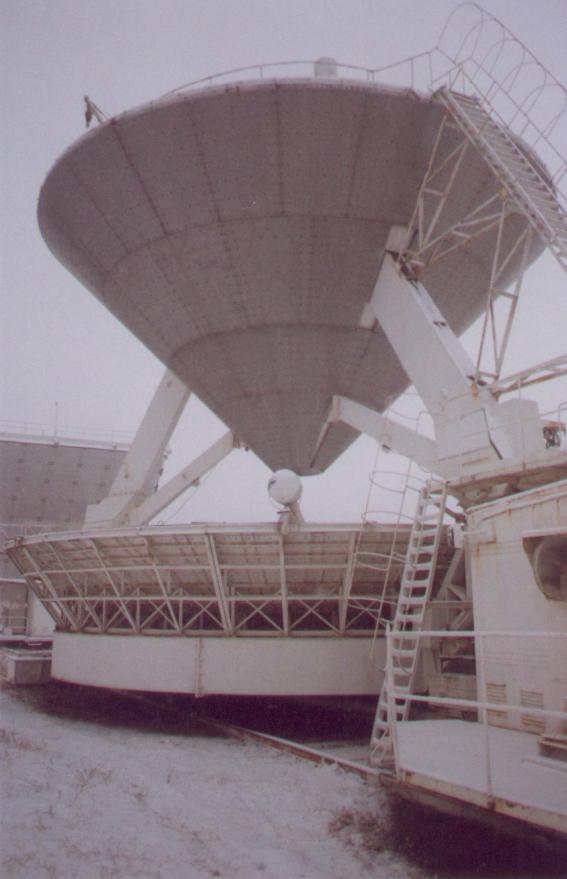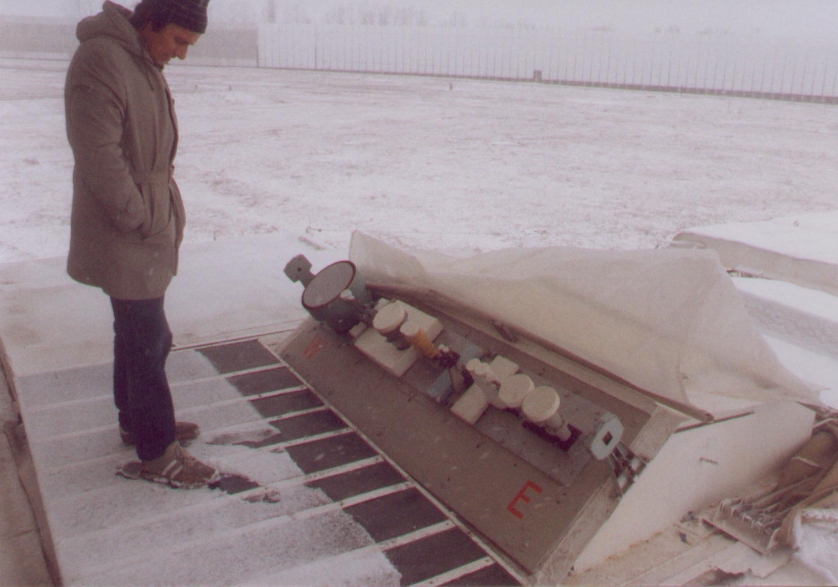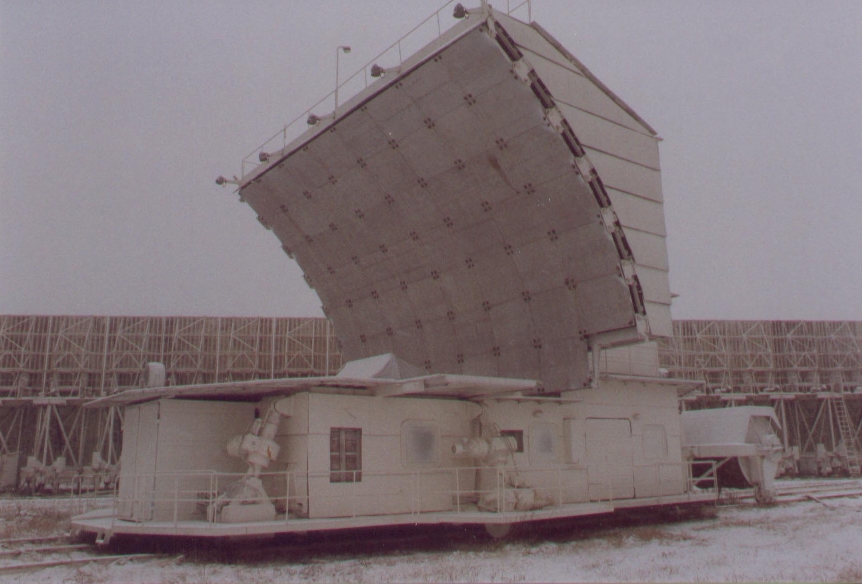

 The Roman alphabet will even let me do a realistic version of the
Cyrillic acronym for this instrument, PATAH-600 (standing
more or less for 600-meter RAdio Telescope ANtenna). This is
one half of the Special Astrophysical Observatory, North
Caucasus (the other half being the 6-meter
BTA optical telescope). It can be seen as a foreshortened coppery
ring from the site of the 6-meter telescope about 40 km away, in fact.
This radio
telescope takes the form of a 600-meter ring of adjustable reflecting panels,
which can be angled to direct the radiation from a point in the sky to
a central point, where it is focussed downward by a cone-shaped
subreflector (which was depicted on a postage stamp issued by the
USSR). In fact, it can be used as up to three subrings,
each directing the radiation to a focus on one of three subreflectors.
These are mounted on rails to allow configuration changes. The ring design
allows higher angular resolution than any current single-dish radio
telescope at the same frequency, although the shape of the response
to a point source is, shall we say, interesting.
One special capability of the RATAN setup is frequency agility;
receivers for wavelengths from about 2-90 centimeters are side-by-side,
so that in principle a source can be scanned over them in succession.
This is especially interesting for variable sources, since otherwise
one could get a difficult mix of variability and spectral information
instead of the source's spectral at any single time.
Seeing the receiver horns gives an excellent demonstration of diffraction, since
the optimum feed diameter scales with wavelength. As far as I could tell,
the instrument has been used mostly in drift-scan mode, where the panels
are set and the source is allowed to drift across the receivers at sidereal rate.
The Roman alphabet will even let me do a realistic version of the
Cyrillic acronym for this instrument, PATAH-600 (standing
more or less for 600-meter RAdio Telescope ANtenna). This is
one half of the Special Astrophysical Observatory, North
Caucasus (the other half being the 6-meter
BTA optical telescope). It can be seen as a foreshortened coppery
ring from the site of the 6-meter telescope about 40 km away, in fact.
This radio
telescope takes the form of a 600-meter ring of adjustable reflecting panels,
which can be angled to direct the radiation from a point in the sky to
a central point, where it is focussed downward by a cone-shaped
subreflector (which was depicted on a postage stamp issued by the
USSR). In fact, it can be used as up to three subrings,
each directing the radiation to a focus on one of three subreflectors.
These are mounted on rails to allow configuration changes. The ring design
allows higher angular resolution than any current single-dish radio
telescope at the same frequency, although the shape of the response
to a point source is, shall we say, interesting.
One special capability of the RATAN setup is frequency agility;
receivers for wavelengths from about 2-90 centimeters are side-by-side,
so that in principle a source can be scanned over them in succession.
This is especially interesting for variable sources, since otherwise
one could get a difficult mix of variability and spectral information
instead of the source's spectral at any single time.
Seeing the receiver horns gives an excellent demonstration of diffraction, since
the optimum feed diameter scales with wavelength. As far as I could tell,
the instrument has been used mostly in drift-scan mode, where the panels
are set and the source is allowed to drift across the receivers at sidereal rate.
 |
 |
Last changes: 11/1999 © 1999